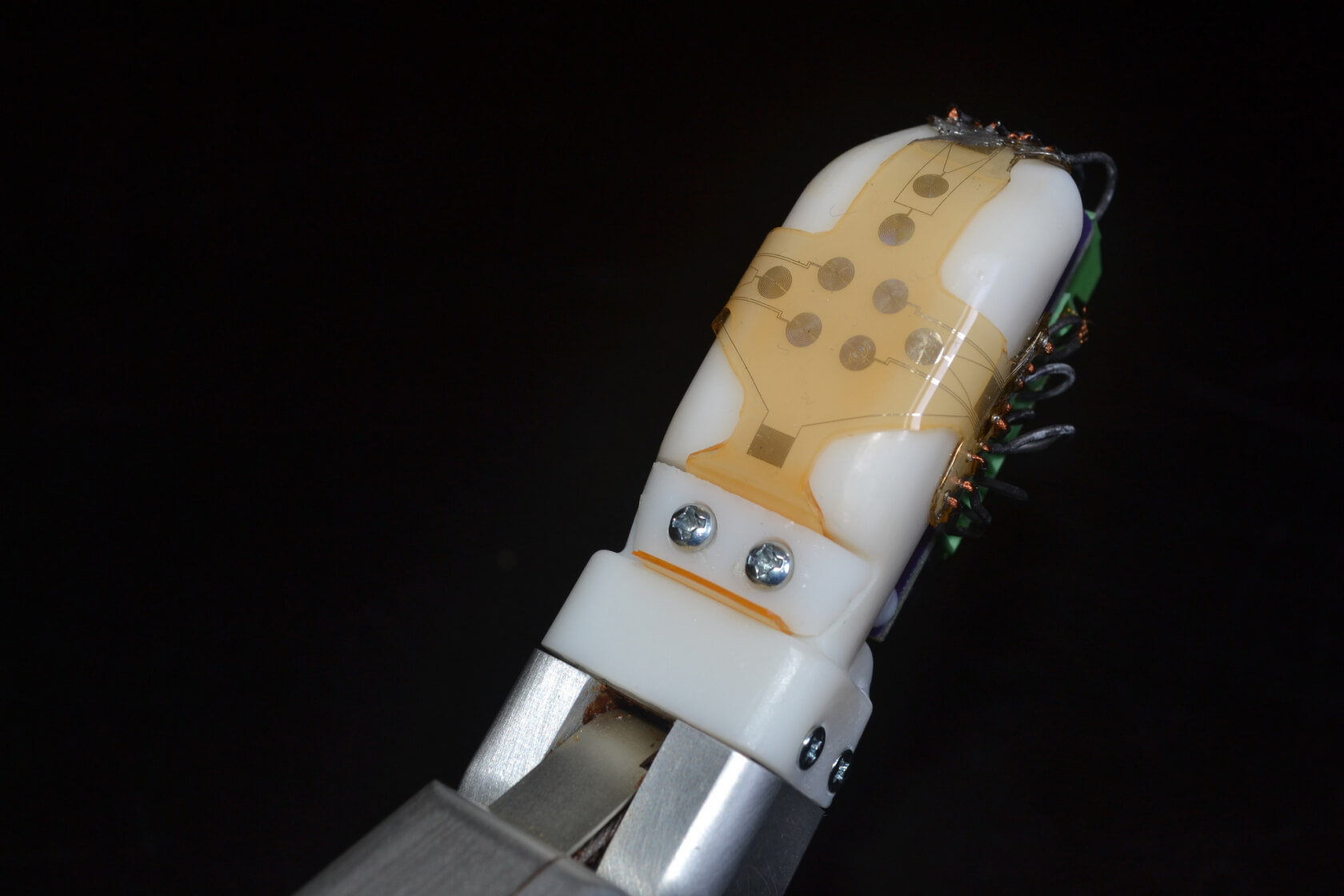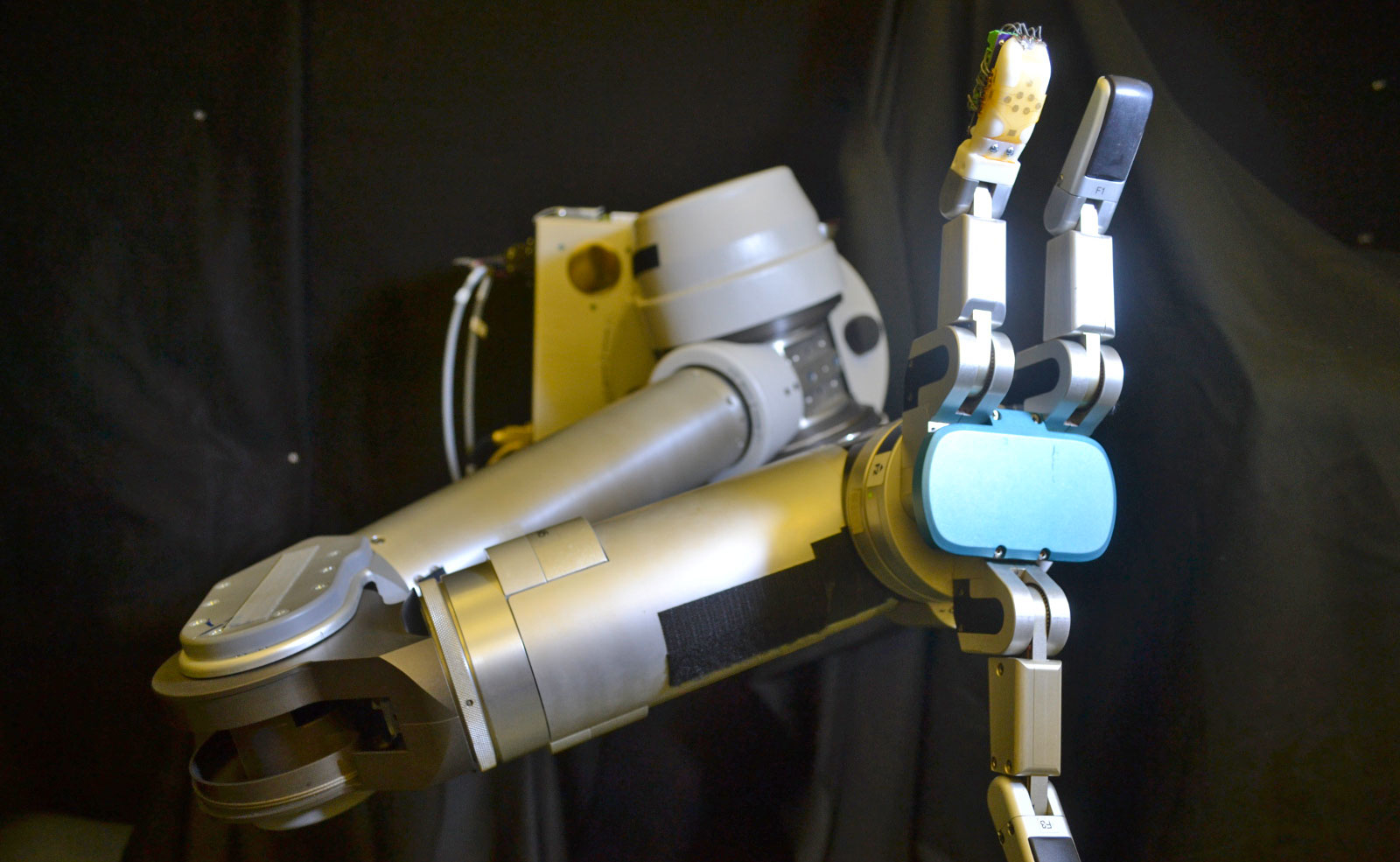Researchers have discovered a way to improve the functionality of robots through a stretchable skin that can cover a machine. The material measures tactile information with a similar amount of accuracy as human skin, relaying information about vibrations and shear force.
A team of engineers from the University of Washington and UCLA developed the skin at the UW's Washington nanofabrication Facility. It's made from the same silicone rubber found in swimming goggles and embedded with serpentine channels filled with electrically conductive liquid metal. The robots receive feedback based on the changing amount of electricity flowing through the channels, which alters as the material is stretched and compressed.
"Our electronic skin bulges to one side just like the human finger does and the sensors that measure the shear forces are physically located where the nailbed would be, which results in a sensor that performs with similar performance to human fingers," said lead study author Jianzhu Yin.

Not only could the skin aid robots in performing delicate tasks such as surgery and bomb disposal, where a sense of touch is often essential, but it might also help amputees "feel" with their artificial limbs. And unlike other synthetic skins, it can sense more than one force at a time.
"If a robot is going to dismantle an improvised explosive device, it needs to know whether it's hand is sliding along a wire or pulling on it," said team leader Jonathan Posner. "Or to hold onto a medical instrument, it needs to know if the object is slipping."
"We have achieved a level of sensitivity and precision that's consistent with human hands," Posner added.
